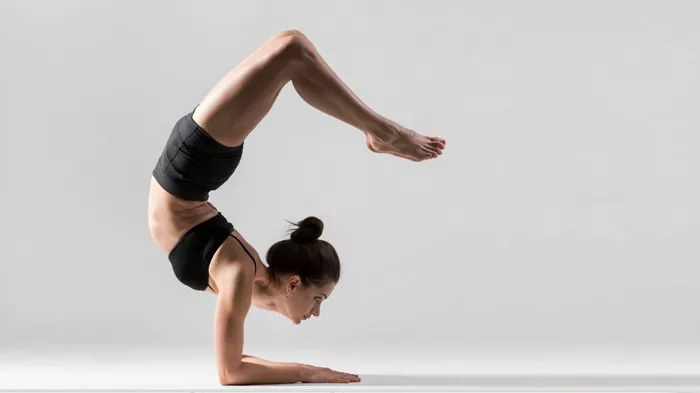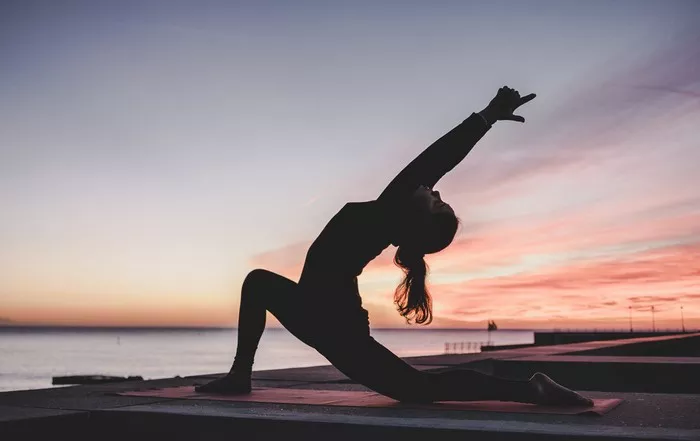The Scorpion Pose, or Vrschikasana, is an advanced yoga posture that combines strength, balance, and flexibility. This pose is visually striking and embodies the grace and power of a scorpion in its natural state. Practicing the Scorpion Pose not only enhances physical abilities but also fosters mental focus and emotional resilience. This article explores the Scorpion Pose in detail, including its benefits, proper alignment, step-by-step instructions, variations, and tips for safe practice.
Understanding Scorpion Pose
Definition and Origins
In Sanskrit, Vrschika translates to “scorpion,” and Asana means “pose.” The pose is known for its unique shape, resembling a scorpion with its tail arched upward. It is commonly practiced in Hatha and Vinyasa yoga styles and is often included in advanced sequences to challenge practitioners.
Importance in Yoga Practice
The Scorpion Pose is more than just a visual spectacle; it requires a combination of strength, flexibility, and concentration. It is a powerful asana that tests and enhances core stability and arm strength, making it essential for developing a robust yoga practice.
Benefits of Scorpion Pose
1. Enhances Core Strength
The Scorpion Pose demands significant core engagement, helping to build strength in the abdominal muscles and lower back.
2. Improves Flexibility
This pose stretches the spine, shoulders, and hip flexors, contributing to overall flexibility and mobility.
3. Builds Upper Body Strength
Holding the Scorpion Pose engages the arms, shoulders, and upper back, increasing upper body strength and endurance.
4. Promotes Balance and Coordination
The pose challenges balance, requiring focus and coordination to maintain the position, which improves overall body awareness.
5. Stimulates Circulation
The inverted nature of the pose enhances blood flow, promoting circulation and vitality throughout the body.
6. Increases Focus and Concentration
Balancing in Scorpion Pose requires mental clarity and concentration, fostering mindfulness and a present state of being.
7. Energizes the Body
Practicing this pose can invigorate the body, releasing stagnant energy and promoting a sense of vitality.
See also: Mastering the Pigeon Pose: A Comprehensive Guide to Unlocking
How to Perform Scorpion Pose
Step-by-Step Instructions
Start in Downward Dog: Begin in Downward Facing Dog (Adho Mukha Svanasana), with your hands shoulder-width apart and feet hip-width apart.
Shift to Forearm Stand: Lower your forearms to the mat, interlace your fingers behind your head, and walk your feet in towards your body, lifting your hips.
Kick Up: Engage your core and kick your feet up towards the ceiling. Use the momentum to lift your legs overhead.
Arch the Back: As your legs come up, begin to arch your back, allowing your feet to move toward your head.
Bend the Knees: Once your feet are overhead, bend your knees, bringing your heels towards your back.
Hold the Pose: Find balance in the pose, keeping your core engaged and your breath steady. Aim to keep your gaze forward to maintain stability.
Exit the Pose: To come out, slowly lower your feet back to the mat, returning to Downward Dog or Child’s Pose for a counter-stretch.
Alignment Tips
Elbows: Keep your elbows shoulder-width apart and pressing firmly into the mat to support your weight.
Shoulders: Engage your shoulder blades, drawing them down your back to create space in your neck.
Core: Maintain core engagement throughout the pose to support your spine and prevent hyperextension.
Leg Position: Ensure that your legs are active, with feet flexed, as they reach overhead.
Common Mistakes to Avoid
1. Inadequate Core Engagement
Failing to engage the core can lead to excessive strain on the lower back. Always focus on tightening your abdominal muscles.
2. Misalignment of the Elbows
Ensure your elbows are directly under your shoulders to distribute weight evenly and avoid shoulder strain.
3. Holding the Breath
Maintain steady, deep breaths while in the pose. Holding your breath can lead to tension and instability.
4. Overarching the Back
Avoid excessive arching of the lower back. Instead, aim for a balanced engagement throughout your spine.
Variations of Scorpion Pose
1. Scorpion Pose on the Wall
Perform the pose with your back against a wall for support.
This variation allows you to focus on alignment and balance without the fear of falling.
2. Half Scorpion Pose
Instead of bringing your feet overhead, keep one foot on the ground while the other leg is lifted.
This modification is ideal for those still building strength.
3. Scorpion Pose with a Block
Place a yoga block under your feet for additional support and to help you balance more easily.
4. Supported Scorpion Pose
Use a strap around your feet to assist with balance and flexibility as you practice the pose.
Modifications for Scorpion Pose
1. Use of Props
Yoga blocks or bolsters can be placed under your elbows for added support.
A wall can help stabilize your balance and provide security as you practice.
2. Gradual Approach
Work on the forearm stand and backbends separately before combining them into the full Scorpion Pose.
3. Practice with a Partner
Having a partner to assist can help you maintain balance and provide guidance during your practice.
Integrating Scorpion Pose into Your Practice
1. In a Vinyasa Flow
Incorporate the Scorpion Pose into a vinyasa flow sequence, transitioning from Downward Dog to Forearm Stand and then to Scorpion.
2. As Part of a Backbend Sequence
Include Scorpion Pose in a sequence focusing on backbends, such as Camel Pose and Cobra Pose, to warm up the spine and shoulders.
3. In a Strength-Building Routine
Integrate Scorpion Pose into a routine designed to build upper body and core strength, combining it with poses like Plank and Dolphin.
The Emotional Aspect of Scorpion Pose
1. Embracing Fear and Vulnerability
The Scorpion Pose can evoke feelings of fear and vulnerability due to its challenging nature. Practicing it encourages confronting and embracing these emotions.
2. Cultivating Resilience
Successfully achieving and holding the pose can instill a sense of accomplishment and resilience, fostering confidence in one’s abilities.
3. Encouraging Mindfulness
The concentration required for Scorpion Pose promotes
mindfulness, allowing practitioners to connect with their emotions and physical sensations.
Common Questions About Scorpion Pose
1. Is Scorpion Pose Suitable for Beginners?
Scorpion Pose is considered an advanced pose and may not be suitable for beginners. However, working on forearm stands and backbends can prepare you for this pose.
2. How Long Should You Hold Scorpion Pose?
Aim to hold the pose for 15-30 seconds, gradually increasing the duration as you build strength and confidence.
3. What Are the Best Preparatory Poses?
Practices that focus on core strengthening and shoulder opening, such as Dolphin Pose, Plank Pose, and Camel Pose, can prepare you for Scorpion.
4. Can Scorpion Pose Help with Back Pain?
Practicing Scorpion Pose can improve back flexibility and strength; however, those with chronic back pain should consult a healthcare professional before attempting.
Conclusion
The Scorpion Pose is a captivating and challenging asana that offers numerous physical and emotional benefits. By understanding its mechanics, variations, and modifications, practitioners can deepen their practice and enhance their connection to their bodies. Embrace the journey of mastering the Scorpion Pose, cultivating strength, flexibility, and mindfulness along the way. With dedication and patience, you can unlock the transformative power of this beautiful posture, bringing balance and vitality to your yoga practice.
You Might Be Interested In
Gentle Yoga Poses: Embracing Serenity and Balance



















